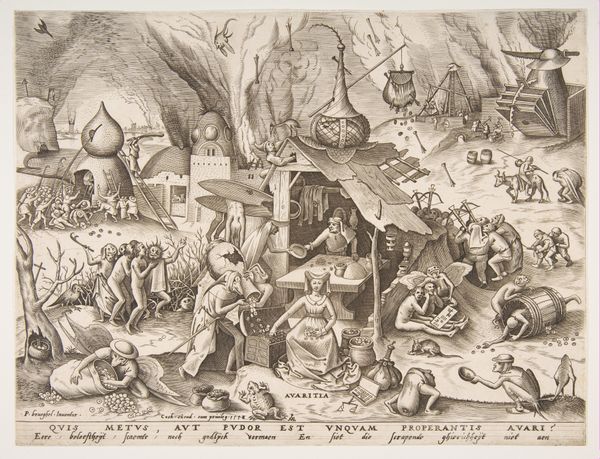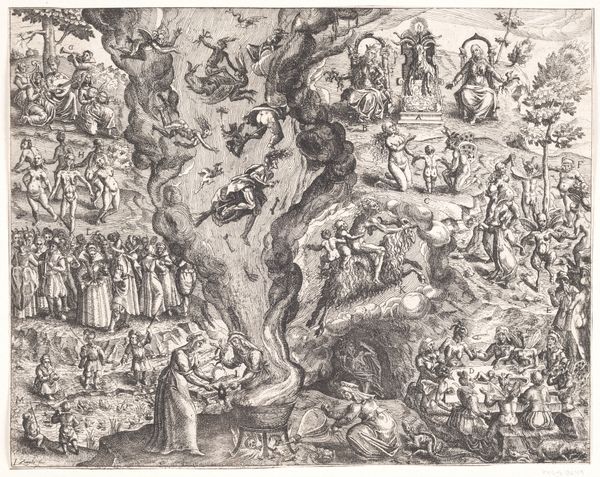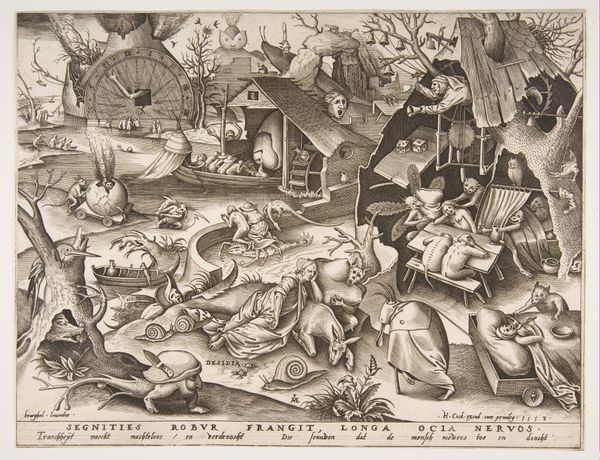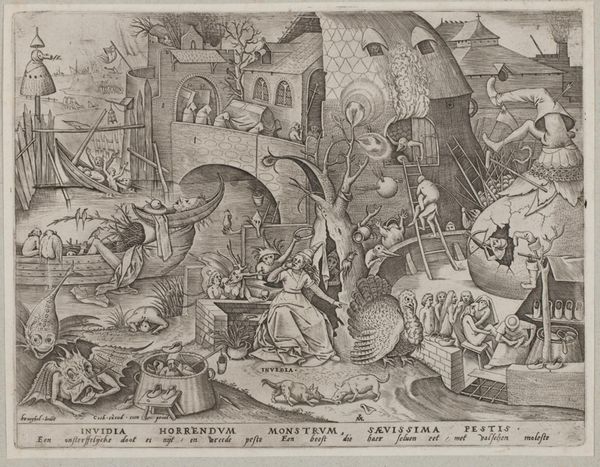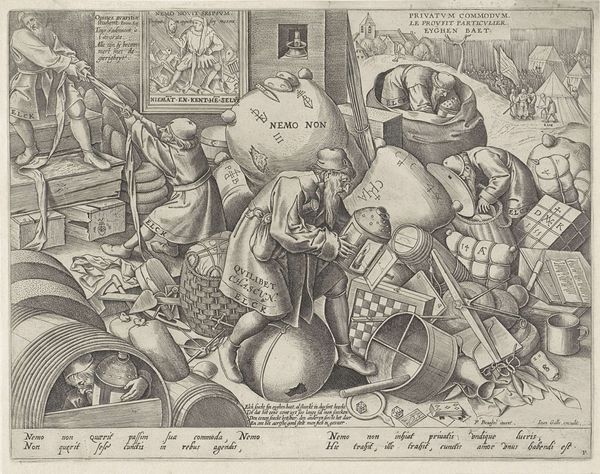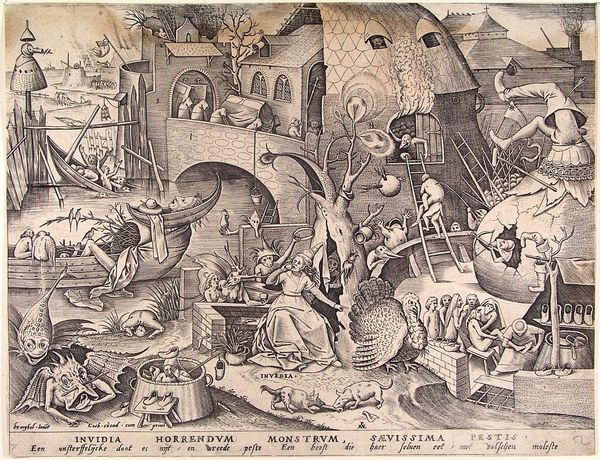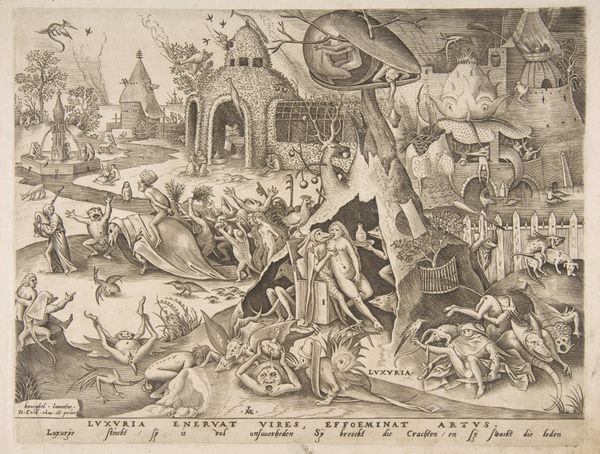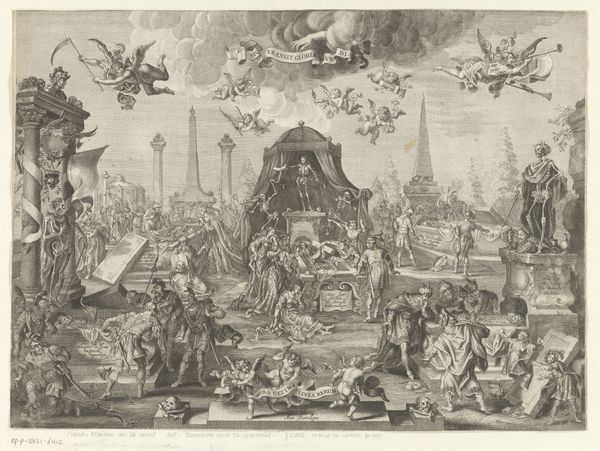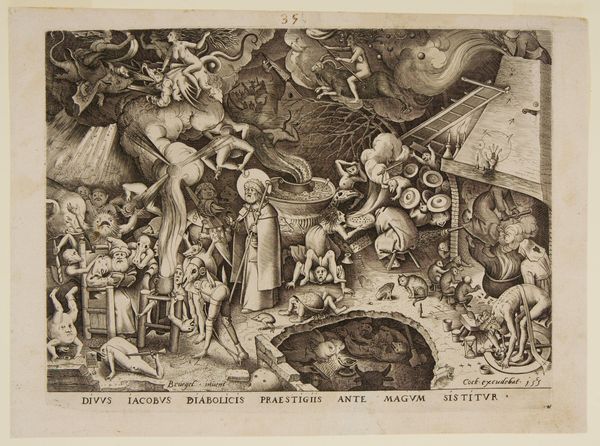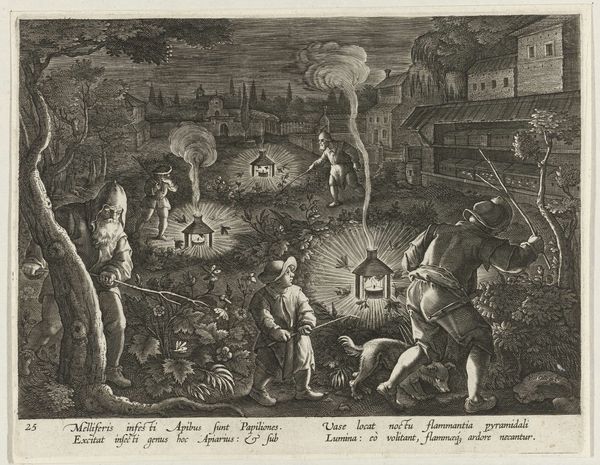
Pride (Superbia), from the series The Seven Deadly Sins 1558
0:00
0:00
drawing, print, etching, engraving
#
drawing
#
allegory
#
narrative-art
#
pen drawing
# print
#
pen illustration
#
etching
#
figuration
#
line
#
genre-painting
#
history-painting
#
northern-renaissance
#
engraving
#
miniature
Dimensions: sheet: 8 7/8 x 11 5/8 in. (22.5 x 29.5 cm)
Copyright: Public Domain
This intricate engraving, titled 'Pride' (Superbia) from the series 'The Seven Deadly Sins', was created by Pieter van der Heyden around the mid-16th century. Van der Heyden employs a dense, almost overwhelming composition. Shapes crowd the space, creating a visually complex scene. The artist presents a panorama of fantastical architecture and allegorical figures, rendered with meticulous detail. The composition reflects a world where boundaries are blurred and distorted, undermining any sense of fixed meaning. The engraving is rich in visual symbols and cultural codes that invite decoding. The peacock, historically a symbol of pride, is displayed prominently at the center. This emphasis on surface and appearance underscores the superficiality of pride itself. The distorted architecture and bizarre creatures visually destabilize established meanings, revealing how pride can lead to a distorted perception of reality. This functions as part of a larger cultural and philosophical discourse, prompting ongoing interpretation.
Comments
No comments
Be the first to comment and join the conversation on the ultimate creative platform.
